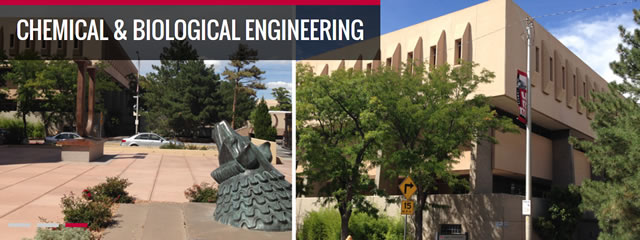
Chemical and Biological Engineering ETDs
Publication Date
6-25-2010
Abstract
Studies were performed on three different catalysts in order to determine their stability and sintering behavior. Pd deposited on a flat single crystal substrate made of Al2O3 was characterized to determine if the mechanism of Ostwald ripening was solely dominated by vapor phase transport of metal atoms. The atoms emitted could be determined by the rate of evaporation and an attempt was then made in order to relate the rates of emission to sintering (instability of nanoparticles). It was found that the rates of emission did not fully reflect vapor phase transport (direct evaporation). The particle-support interaction was increasing the rate of evaporation leading to the belief that adatom diffusion, caused by a weaker bound atom on the support, played a more significant role than vapor phase transport. A powder Pd/Al2O3 was also put under similar ageing conditions as the single crystal samples, but relating the two separate systems proved difficult. This was due to the containment of the metal on the support and changes of the powder support through ageing (loss in surface area). Support changes (decrease in the number of sites for particle nucleation) caused by the heat treatments seemed to also be influencing the sintering behavior. The powder samples were put through two different ageing studies, one with the presence of water vapor and the other without. The presence of water vapor enhanced the rate of sintering due to the interactions with the support and particles, possibly by changing the support morphology or making hydroxyl groups on the metal particle surface or both. A second catalyst was characterized to establish the affect support structure would have on the stability of nanoparticles. 10wt% of Pt and Re were deposited on two different carbon supports, Norit and Vulcan Carbon. Norit Carbon was imaged to be highly roughened and as a result had a large surface area (1000m2/g). The Vulcan Carbon was imaged to be more graphitic and contain two different types of structures, one similar to larger graphitic carbon particles, and the other to resemble a more roughened structure similar to that of Norit. The Pt and Re species appeared to be homogeneously dispersed on the Norit with both atomic species and nanoparticles. It was seen that the Pt and Re atoms preferred to adsorb onto the areas where the carbon structure appeared have an edge site. A third catalyst was used for in-situ TEM studies to clearly identify and record the exact sintering mechanism at the early stages of exposure to reaction conditions. Previous theory and simulation were in debate on which sintering mechanism dominates and what is the cause, our in-situ studies gave direct evidence of the sintering mechanism taking place under a gaseous and heated environment. A ~14wt%Ni on MgAl2O4, used primarily for steam reforming, was put through a series of in-situ TEM experiments under high temperatures (750°C) in the presence of hydrogen and water vapor 3.6mbar (1:1). It was found by recording images at a fast rate (every 100-200 milliseconds) the sintering mechanism could be observed and recorded. In the later stages of heating, ~30 minutes after reaching temperature, larger particles (>5nm) were seen to be mobile on the surface, contrary to theory which suggests that larger particle should be immobile. Recorded images and movies taken at the early stages of heating revealed that smaller particles (<3nm) were immobile on the support but could ripen away rapidly. This evidence is also contrary to previous theory that suggested smaller particles would be highly mobile and coalescence once the catalyst is exposed to reaction conditions. Further investigation into the sintering events, revealed that particle adhesion decreases as both time and particle size increase. The loss in adhesion to support in larger particles and larger ratio of interaction for smaller particles, may explain why smaller particles were stable on the support but ripened, and why larger particles were recorded to be mobile. Future work on flat samples could involve various supports in order to determine which support makes the most stable catalyst and modeling that includes particle-particle interaction could be included. The addition or subtraction of functional groups on a single carbon support could be used as a further probe on how it affects atomic dispersion and adsorption. New in-situ studies performed at atmospheric pressure could be of use as pressures may influence the rate of sintering and the stability of the metal nanoparticles.
Keywords
Sintering, Catalyst, Nanoparticles, Stability, Palladium Platinum Rhenium, Nickel; Catalysts, Nanoparticles, Sintering, Catalyst supports
Sponsors
National Science Foundation Haldor Topsoe Toyota
Document Type
Dissertation
Language
English
Degree Name
Chemical Engineering
Level of Degree
Doctoral
Department Name
Chemical and Biological Engineering
First Committee Member (Chair)
Ward, Tim
Second Committee Member
Atanassov, Plamen
Third Committee Member
Brearley, Adrian
Recommended Citation
DeLaRiva, Andrew. "The sintering and stability of catalytic nano-particles." (2010). https://digitalrepository.unm.edu/cbe_etds/34


